- トップページ
- 日本国内での取り組み
- JICA中部
- 「人」明日へのストーリー
- Papua New Guinea with Unique Indigenous Cultures (Mr. Sylvester ROKUMAN - Part 1)~Interview to JICA Long-term Participant~

JICA Long-term Training Program Participant (JICA Scholarship for Graduate Student)He belongs to Graduate School of Engineering, Nagoya Institute of Technology.(JICA Scholarship: SDGs Global Leaders Course 2019)He is from Independent State of Papua New Gu
Mr. Sylvester ROKUMAN
We interviewed Mr. Sylvester ROKUMAN from Graduate School of Engineering, Nagoya Institute of Technology, one of the Long-term Training Program Participants at JICA Chubu. (Part 1~4)
(Interviewer: Mieko ARAKI, Training Program Division, JICA Chubu)
You are from beautiful island, Independent State of Papua New Guinea (PNG) with unique indigenous cultures. Is there something you rediscover great or appreciate more about your country after coming to Japan?
I started coming to Japan as a government employee in 2015 and therefore my answer to this question will mostly be in that context.
Papua New Guinea (PNG) is a third-world and developing country; it is not as developed as Japan, in terms of modern infrastructure as well as the necessary governing systems, and not forgetting the technology. So, coming to Japan and learning about the history of Japan and how Japan had developed up to this stage over the years had a life-changing impact on my personal view of Japan and PNG from a global perspective. Learning from the difficulties that Japan went through over the years and how those difficulties were approached, taught me a lot of lessons that I could take back to my home country, PNG.
In almost everything I came across in Japan that I thought was significant, I always did a quick mental contrast with PNG and most of the time discussed my thoughts with my colleagues and partners when I had the chance to. Out of the many experiences I’ve had in Japan, some of the obvious lessons I learned that make me think about PNG are:
1.The General Lifestyle
PNG has a Pacific Lifestyle where, basically, people only worked for survival purposes and not so much to develop or improve their livelihoods or systems. This is true for more than 70% of the population that lives in rural areas. Although this lifestyle is mostly true in the rural setting, this trend extends into the modern lifestyles in the cities and towns as well and mixes with the modern lifestyle in such a way as to be sometimes conflicting in nature. For example, in the rural setting, one does not work as hard until there is a need for survival, only then they go hunting, gathering, fishing, gardening, building a house, etc. and in the cities and towns, the trend is that people who land a job, stay on that particular job for the entirety of their lives. Comparing the latter with life in Japan, life in Japan seems to be very modern and busy, and there is so much movement of employees from one job to another as well as promotion, etc.
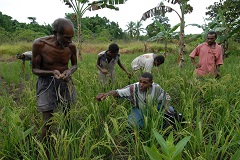
Farmers checking if upland rice have diseases
Photo: Kenshiro Imamura
2.The Government systems in general
PNG government system is mostly influenced by Australia, which is the British system of governance. Considering the nature of PNG’s ethnicity having over 800 different languages, it is increasingly becoming evident that the British system is becoming unsuitable for PNG as PNG continues to grow in population as well as subscribing to the modern trends whilst maintaining its diverse ethnic nature. On this note, learning how Japan improved and developed its governing systems on its terms has taught me many lessons that I can apply in my home country. Once I taught it was difficult, looking back, it is becoming evident that PNG can develop a government system that is best suited to the nature of its diverse cultures, environment, and people through lessons learned from Japan.
In summary, after coming to Japan, I realize and appreciate that, unlike Japan, PNG has a very uniquely diverse culture and environment posing a unique set of advantages and some disadvantages. Having an environment rich in natural resources that provide almost everything a country needs to grow sustainably, PNG has the potential to grow once it gets all its systems worked out. PNG is an island nation, like Japan, that upholds its diversity in culture & traditions. Furthermore, PNG depends on the import and export of goods and services, which may potentially lead to growth if the appropriate measures are taken. Therefore, there are so many cross-cutting similarities between the two countries, and PNG can learn a lot from Japan to grow like Japan.
Currently, the exhibition “Story of the Pacific Islands” is on view at JICA Chubu. Along with it, the event to think about health is scheduled this month (June 27, 2021). Do you have any Papua New Guinean original health tips by any chance?
Unfortunately, PNG does not produce medicine so there is not much I can say in that regard. Papua New Guineans mostly resort to herbs for medicine. This knowledge is known throughout generations and passed down from our ancestors.
I wish to share with you how I was able to save three people at different times who were bitten by a venomous snake and couldn’t make it to the hospital on time. I am not sure if this method is been scientifically proven but it worked for me and I believe in it.
While growing up as a hunter, I was taught to treat snake bites in the event I get bitten by a venomous snake out in the forests or in places where the hospital is unreachable. I always packed and carried with me a packet of charcoal from burnt wood (any wood), a sharp blade, a nylon rope, and some mango skin peeled off a mango tree. When the snake bites, it usually leaves two of the top teeth marks, or sometimes it leaves four teeth marks, including the bottom teeth. Nevertheless, the rope is used to tie above or below the bitten area, depending on where the snake has bitten the subject, to prevent or slow the blood going up to the heart. The blade is used to cut into the skin and flesh where the snake has bitten the subject, enough to make the bitten area bleed out and the cut should connect all teeth mark, at a crossing is better, which I prefer. The charcoal is then pushed firmly onto the cut area while the subject chews and sucks on the mango skin while waiting for the charcoal to suck out the venom. The charcoal will fall out of the cut area if it completes sucking out the venom. The subject should put new charcoal to confirm before moving while continuing to chew on the mango skin. (To be continued...)
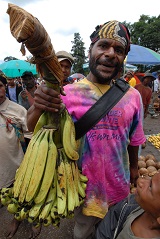
Market in Goroka
Photo: Kenshiro Imamura
* This edition, we shared his incredible real-life experiences that seem out of a movie. Next time, we will share the heartwarming reasons behind his decision to come to Japan!




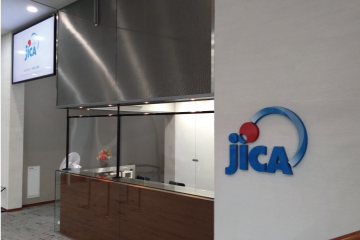

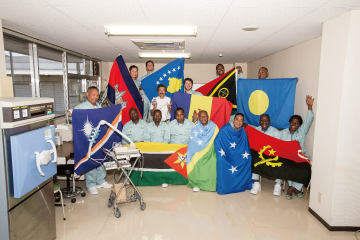

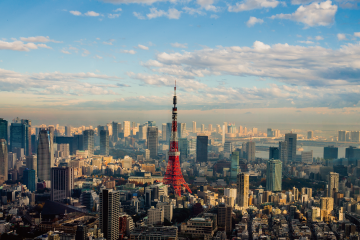
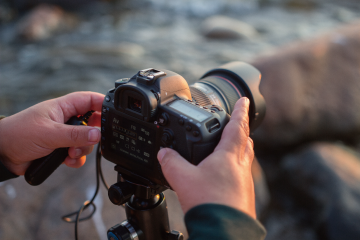


scroll